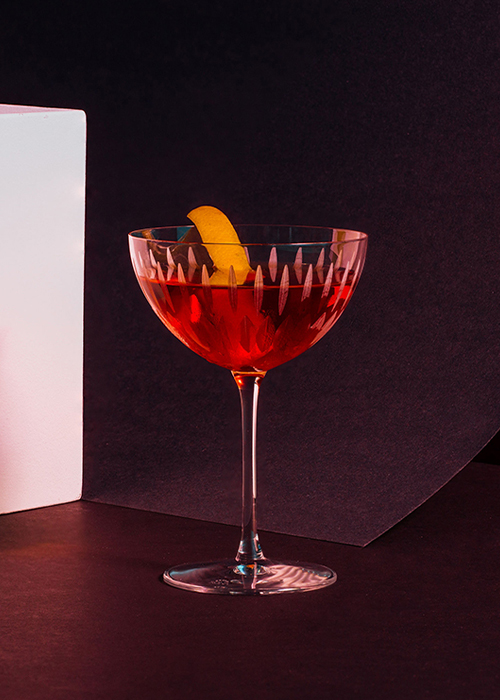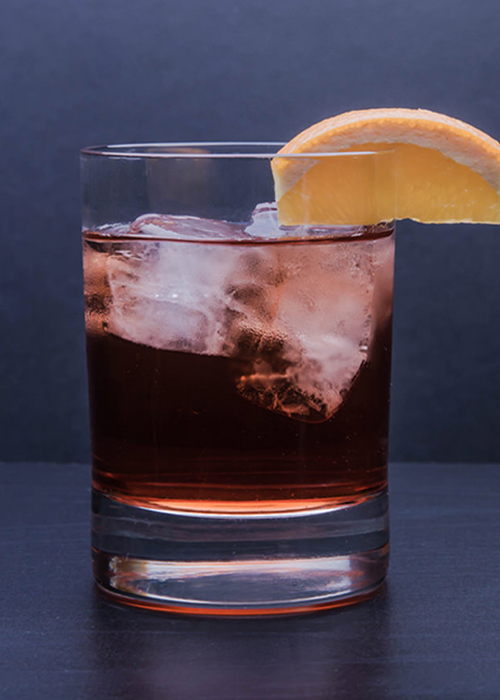In recent years, vermouth has gained importance in drinking culture, thanks to a wider appreciation of aperitivos and the prominence of mindful drinking practices. An increasing number of producers — based in Europe as well as here in the States — have only added to its credence. Yet the true beauty of vermouth is its versatility: It can be enjoyed neat or in simple highballs, as well as the many classic cocktails in which it plays a dutiful supporting role.
With multiple guises and styles, vermouth presents a complex landscape. To help drinkers navigate that path, VinePair consulted Valentino Longo, a Miami-based bartender originally from Rome. Longo previously helmed the bar program at the city’s Four Seasons Hotel at the Surf Club and, in 2020, won the Tales of the Cocktail Foundation award for most imaginative bartender. He now works in consultancy and offers guided cocktail classes through his company Shōshin Art Club.
Getting to Know Vermouth
For centuries, alcohol producers across the globe have infused wines with botanical ingredients, offering a precursor to the beverage we know as vermouth. The modern-day category owes a debt to both Italy and Germany; the former pioneered the now-popular formula, while the latter lent a name to the creation through a derivation of the word “wormwood” — a key ingredient in the drink.
Don’t miss a drop!
Get the latest in beer, wine, and cocktail culture sent straight to your inbox.
While vermouth finds a famous home in numerous cocktails, Longo urges drinkers to first consider it as a wine. After all, this is a wine-based product that shares much in common with standard, fermented grape juice. It deteriorates over time after bottles are opened, for example, and arrives with an ABV that hovers in the mid-to-high teens.

Of course, other factors set it apart. Vermouth is produced in three distinct styles — dry, white (also known as bianco or blanc), and sweet — that are differentiated by their varying levels of sugar and color. Though producers will occasionally use red wine as the base, most use white wine for all three, with caramel and other colorants providing the darker hue for sweet vermouth, Longo explains.
To explore this broad category, Longo recommends first drinking vermouth chilled and neat, on the rocks, or with soda water. “I love a vermouth highball,” he says. “For me, that’s the best way to really appreciate the botanicals and the flavors of the vermouth.”
But Longo also acknowledges that not all vermouths shine when drunk in this manner. Though price is not a sure indicator of quality, cheaper bottles (around $20 to $25) are better used in cocktails, he says, while spending up to $40 should provide an example that has a more complex character and excels when sipped neat.
How to Use Vermouth in Cocktails
So what about those cocktails — and how should drinkers deploy cheaper iterations?
Longo points to the Americano as the ideal starting point. Made with equal parts sweet vermouth, Italian bitter (i.e. Campari), and soda, he describes the drink as the “grandfather” of the Negroni, which acts as a halfway point between simple highballs and stirred, spirit-forward drinks.
From there, he suggests advancing to the Martinez, a drink many consider to be a precursor to the Martini. Another equal-parts formula, this cocktail sees gin married with sweet vermouth and improved (in the technical sense of the word) with the addition of Maraschino liqueur and a few dashes of Angostura bitters.
It’s no coincidence that Longo’s suggested drinks contain a higher proportion of vermouth than the common formulas for modern-day Martinis and Manhattans (which use dry and sweet vermouth respectively). This approach gives the botanical-infused wine a heightened presence in the cocktails, and also informs another of his drinking tips.
“I love to suggest adding a little bit extra in classic cocktails,” Longo says. “An amazing Manhattan can be made by using two parts of sweet vermouth to one part bourbon — flipping the ratios.”
Garnishes offer another opportunity for amplifying the character of vermouth. To match the slightly saline character of French dry vermouth, Longo opts for an olive, caper, or onion garnish. For the “piney, lemony, herbal” notes of Italian offerings, he reaches instead for lemons or fresh herbs. “Garnishes should always follow the flavor profile of the products you’re using,” he says.

How to Store Vermouth
Among the first and most important lessons new bartenders learn is that open bottles of vermouth should always be kept in the fridge. This stems from the product being made almost entirely of white wine, Longo explains, and helps slow down the oxidation of the liquid and deterioration of quality.
Open bottles are “good for up to one month in the fridge,” he says, and a sure sign that the liquid has passed its peak is a noticeable color change. In the case of dry and bianco vermouths, spoiled bottles turn from golden to amber, while sweet vermouths lose their vibrancy.
“If you’re not a big drinker and you want to have a cocktail every once in a while, there’s plenty of good half-bottles or 500-milliliter bottles,” Longo says.


